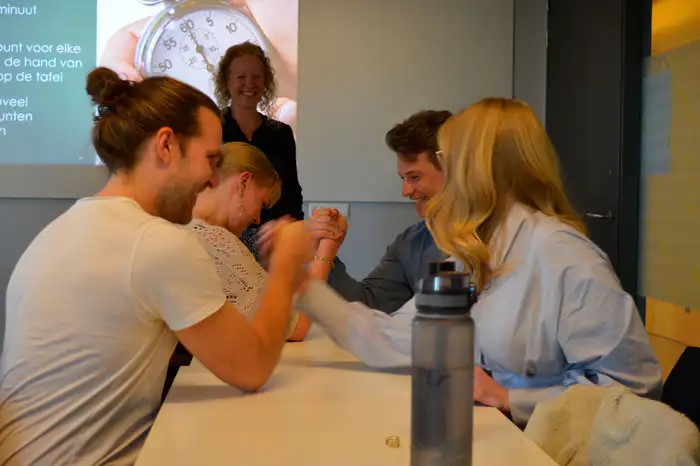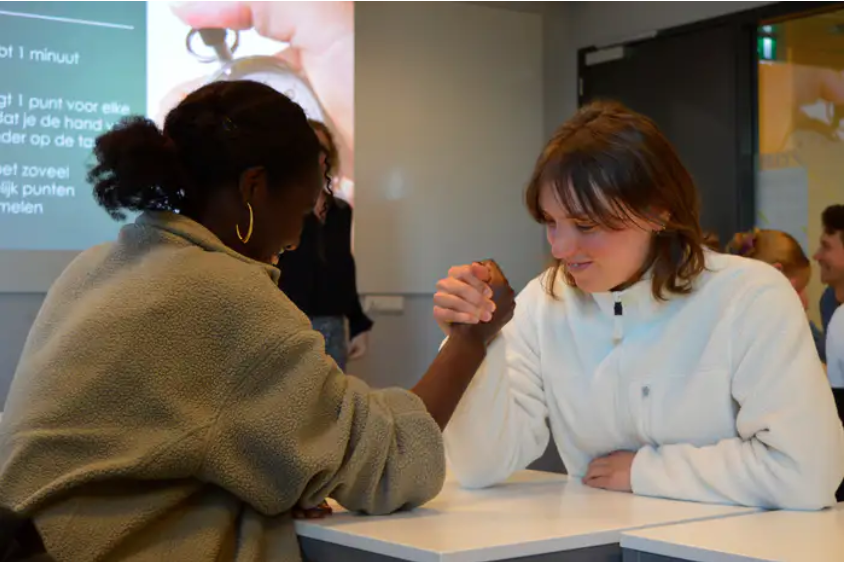Lost in Translation? Dialogue in Times of Polarisation
In this interdisciplinary course on dialogue in polarised times, students learn to navigate difficult topics by facilitating constructive conversations. Drawing on her experience in international mediation and conflict resolution, Judith van den Boogert guides them in developing courage, empathy and trust to address polarisation in the Netherlands. The course attracts students eager to lead meaningful dialogue across differences and build real connection.
The power of dialogue
Lecturer Judith van den Boogert explains: “This course goes back to the basics, creating space for connection to become possible again. Students explore various forms of dialogue, uncover what lies beneath opposing viewpoints, and practice how to truly listen and understand—especially in the role of facilitator.”
Many people engage in discussion without really knowing how to have a meaningful and layered conversation. When viewpoints differ, the discussion can easily become polarised. “But by using the dialogue method, you can broaden your perspective and that of the person you’re speaking with,” Judith says. She gives an example: two individuals may appear to be political opposites. “But when you go deeper and ask the right questions, you often find they’re grappling with the same underlying concerns. Their positions might differ, but the core issues are often shared. And that’s where real connection can happen—even if their solutions remain different.”
Developing courage, empathy and trust
The three core Inner Development Goals students are working on in this course are courage, empathy and trust. Judith teaches students how to shape a dialogue process: from creating safety and structure to making autonomous choices. “I want to empower the students to feel confident and find the courage to initiate conversations,” Judith says. “Empathy is key to understanding others without judgment—even when their views are very different from yours. And trust is fundamental to dialogue. It develops gradually, even between people who initially distrust each other or wouldn’t normally engage. That distance can suddenly shift into connection.”
Judith sees her students grow in both confidence and skill: “They really dare to engage in conversations about tough subjects. They experiment freely and are not afraid to make mistakes.”
When difficult topics arise, dialogue can expand both your perspective and the other’s. But safety is essential—only then can distance shift into connection.
Theory and practice closely intertwined
Students experience the importance of safety from the very first dialogue exercise. Over the following weeks, they explore the structure and value of dialogue, conduct conflict analyses and reflect on inclusion and identity through a museum visit and identity exercise, with plenty of space for reflection and exchange.
In the final part of the course, students take on the role of dialogue facilitator, receiving peer feedback as they design and guide sessions. They explore different settings, including a Keti Koti dialogue table, political dialogues and trust-building in long-term processes.
A crucial part of dialogue is recognising emotions and reading body language. If someone gets very angry, shuts down or wants to leave, immediate confrontation won’t help. Their body is activated, and clear thinking is blocked. Through grounding, movement or a pause, students learn how to restore calm and make space for real dialogue again.
What I like is the mix of learning styles. It’s theoretical, but also about developing real skills — something that’s quite rare at university. The course opened my eyes to what dialogue can do.


Personal development
Personal growth is at the heart of the course. Judith puts it plainly: “What do you bring to the table as a dialogue facilitator in a difficult conversation?”
Students visibly grow more confident in navigating complex conversations. In small groups, they design a dialogue process around a topic of their choice, applying their insights directly. At the end of the course, they submit a paper connecting theory to personal development.
Learning outcomes
- The student is able to demonstrate empathy to foster understanding and facilitate dialogue between participants
- The student is able to create a safe environment where participants feel free to speak openly during dialogues
- The student is able to show courage by engaging in difficult conversations and addressing challenging issues within dialogue processes
- The student is able to collaborate in partnerships focused on facilitating dialogue
- The student is able to build trust and provide aftercare as a dialogue facilitator
More information
The elective course ‘Verkeerd Verbonden? Dialoog in tijden van polarisatie’ is part of the Empowered Minds project, which aims to embed affective learning into the educational programmes at the University of Amsterdam.
